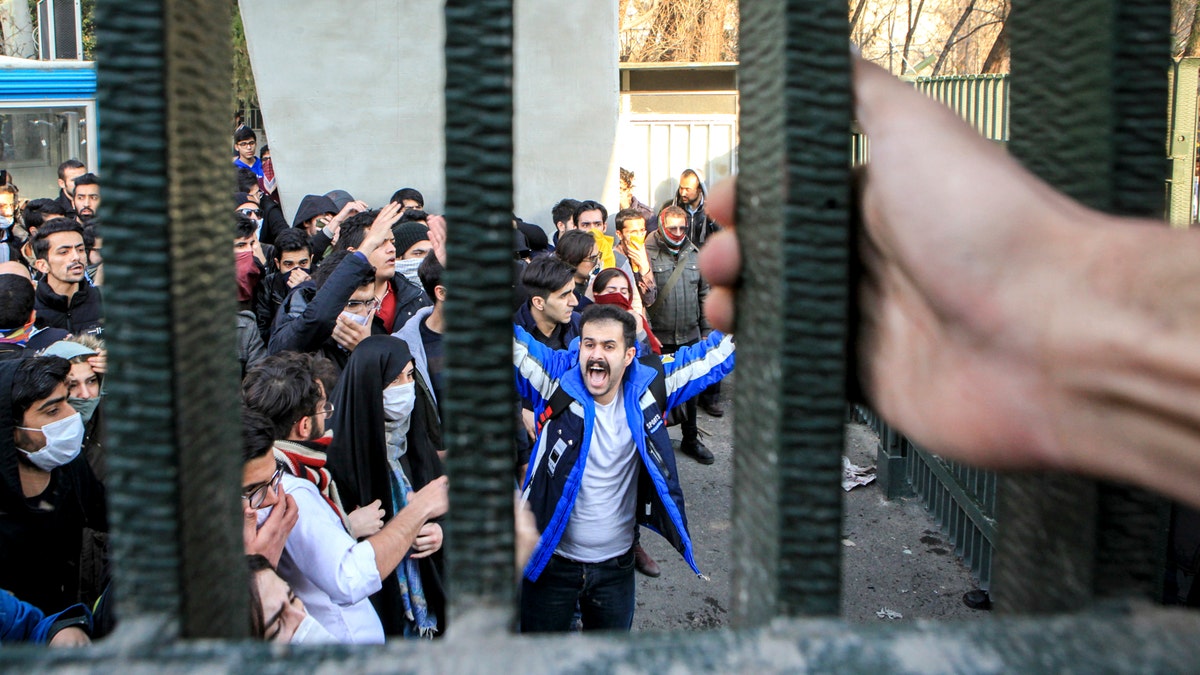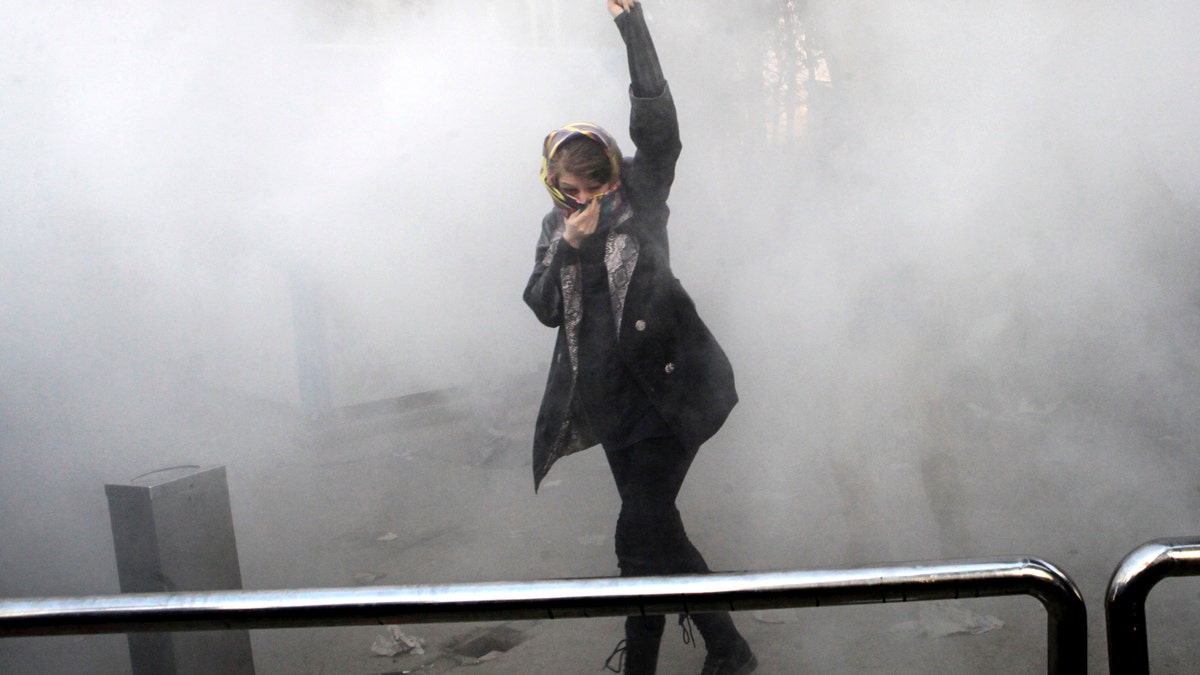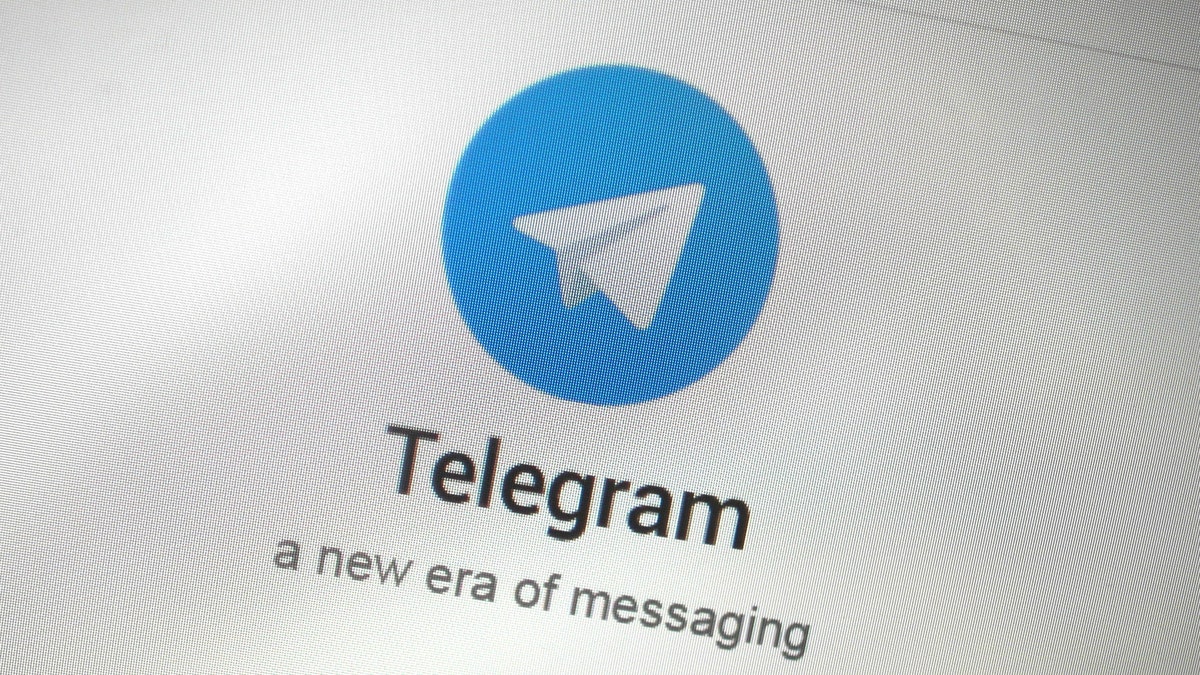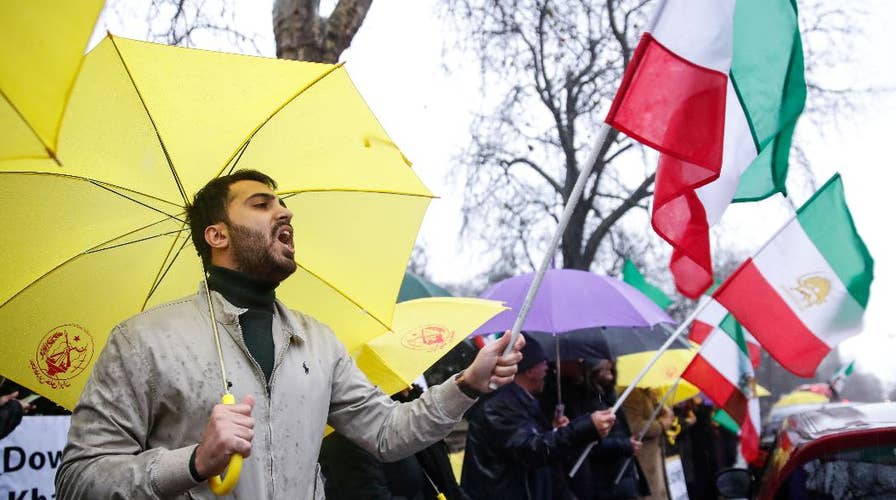Iran protests: On-the-ground look at escalating violence
Protesters have taken to the streets in Iran, demonstrating against the country’s clerical regime. As many participants are being arrested, and even killed, there is a growing call of appreciation and more support from the Trump administration.
While the already repressive Iranian government works to further shut down social media that helps fuel communications among thousands of protestors, the predominantly young, college-aged crowds in the street are scrambling to stay ahead with a variety of counter-censorship maneuvers.
“Iranians are used to changing. Remember we were the first ones using Twitter for political purposes in the Green Revolution in 2009, when Twitter was still largely unknown,” one activist, Ali, told Fox News. “Then it was blocked. Then Facebook came and then it was blocked. Now Instagram and Telegram.”
Iranian officials are blocking access by essentially building a “massive firewall,” according to Dave Chronister, managing partner of Parameter Security and an “ethical hacker” who has worked with the U.S government. But access hasn’t been completely cut – leaving the protesters room to maneuver.

In this Dec. 30, 2017 file photo, taken by an individual not employed by the Associated Press and obtained by the AP outside Iran, university students attend an anti-government protest inside Tehran University, in Tehran, Iran. (AP Photo, File)
“The Iranian government is blocking access to certain IP ranges altogether (such as news sites) and at the same time they are also allowing certain sites to be accessed,” said Chronister. “But they are using content filtering to block what they consider to be risky or subversive, for example Twitter hashtags. So the Iranian activists are using different ‘tunneling’ methods to hide their traffic through encryption and therefore bypass government restrictions – for instance, they use a Virtual Private Network (VPN).”
IRANIAN PROTESTERS 'READY TO DIE' FOR REGIME CHANGE, THANK TRUMP BUT WANT MORE SUPPORT
The VPN encrypts web traffic, so it obscures information that makes it harder for Iran’s security apparatus to catch or block.
One activist in Tehran told Fox News he has downloaded about 10 VPNs, and just one is working. While VPNs can be quickly shut down when detected, activists can just as quickly scramble to find more. Some have also since turned to other platforms such as the anonymity network Tor, which allows users to conceal their location.

In this Saturday, Dec. 30, 2017 file photo, taken by an individual not employed by the Associated Press and obtained by the AP outside Iran, a university student attends a protest inside Tehran University while a smoke grenade is thrown by anti-riot Iranian police, in Tehran, Iran. (AP Photo, File)
But it remains a dangerous game.
“Iranian activists are using a ton of proxies to hide their true identities. A proxy is basically an outside IP address that masks your true one, so if an Iranian citizen uses a proxy to access the internet, he or she will appear to Iranian authorities to be coming from another country like Australia or Hong Kong,” said Jeff Bardin, CIO of Treadstone 71 and a former Air Force intelligence operative.
“This makes it difficult for the Iranian government to block the connection without closing off the internet completely. But using a proxy doesn’t mean you are completely safe, the Iranian government has the ability to shut them down and find out who is using them.”

File photo - The Telegram messaging app logo is seen on a website in Singapore Nov. 19, 2015. (REUTERS/Thomas White)
Should that shut-down happen - which is of increasing concern since the Revolutionary Guards Commander Mohammad Ali Jafari said Wednesday that “when cyberspace was controlled, we saw a decrease in sedition,” the activists have a backup plan.
“Every day we know at 5pm to gather in identified places: the main square in every city and the four main squares in Tehran,” one protest leader in Tehran told Fox News in a telephone interview on Thursday.
Protesters suffered a setback when access to the encrypted phone messaging app Telegram was shut down last weekend. The app is hugely popular in Iran, given there are more than 40 million registered accounts there. Dubai-based Telegram founder Pavel Durvov claimed his app was blocked after he refused to adhere to the regime’s demands to shut down certain channels used by “peaceful protesters.”

File photo - U.S. President Donald Trump has vowed to support the protesters (REUTERS/Kevin Lamarque)
It is not yet known if the ban will be lifted, as Iran’s interior minister has said such networks are causing “violence and fear.”
THE LATEST: IRAN'S INTERIOR MINISTRY SAYS 42,000 PROTESTED
Some hope more app and software companies will stand up to Iran’s demands to censor access. “Software developers and social media executives should not abdicate their responsibilities to their uses and clients simply to retain a market in Iran,” asserted Behnam Ben Talebu, Senior Iran Analyst for the Foundation for the Defense of Democracies (FDD). “In short, these companies should not be acceding to Iran’s demands.”
Some of the government efforts have, for the protesters, unfortunately been successful. “Although Iranians have grown accustomed to using proxies to access social media sites, when the internet speed is down, even the proxies become useless,” lamented human rights activist, Maryam Nayeb Yazdi. “It is much harder to get information out of Iran right now, which in turn decreases media coverage of the Iran protests.”
Srdja Popovic, who led the student movement to topple Serbian President Slobodan Milošević more than 17 years ago and has since gone on to become founder/executive director of the Belgrade-based Centre for Applied Nonviolent Action and Strategies (CANVAS), also noted that “authoritarian governments have mastered two main skills in fighting the activists.”
“One is digital censorship and surveillance and another one is organized armies to spread the narrative and very often conspiracy theories and hate speech,” he said. “Iranian activists are proof that activists need more support and tools from the world of technology.”
“The U.S must help us,” one Tehran demonstrator, Turan, told Fox News. “The internet is weak, sometime we get cut off. Sometimes the audio and video does not work. We try to use different software to overcome the problem of filtering. But we have many problems.”
President Trump has posted an array of Twitter messages supporting the demonstrations, vowing that the U.S will come to their side “at the right time.”
“From an individual standpoint, people (on the outside) can also participate in things like the Free Net Project, where they can open an individual VPN connection, basically a private person-to-person network, that can help people in restrictive countries access open internet,” said Chronister.
The project’s CEO and founder, computer scientist Ian Clarke, told Fox News they indeed had a swell of donations on Dec. 31st – the day the uprising began.
“We received over $5,000 in donations,” he said. “In a typical month we receive just a few hundred dollars.”

